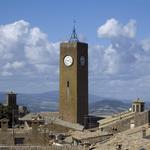Things To Do
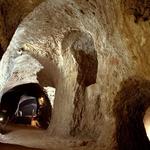
Orvieto Underground
A pleasant guided tour along a very easy route makes it possible to get to know Orvieto’s underground world, created by its ancient inhabitants over about 2500 years of uninterrupted digging. An hour-long tour on a discovery of a millenary, surprising and unexpected “Underground City”.

Duomo di Orvieto
The city's top tourist destination is this striking church with its unusual façade, quite different from those you've seen elsewhere in Italy. It seems as though its interior decoration has been put on the outside - alternating courses of black basalt and yellow limestone were decorated by the finest artists of the day, covering every surface with sculptures, stained glass, and brightly colored mosaics.
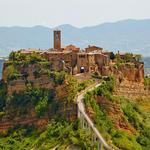
Civita di Bagnoregio
Civita di Bagnoregio is a magical, surreal, fantastic place located on top of a tuff hill that can only be reached by crossing a narrow pedestrian bridge. From there you can enjoy one of the most stunning panoramic views of the whole Lazio region. Nick-named "the town that is dying", due to the constant erosion of the tuff rocks where it is placed, this citadel half-way between Orvieto and Lake Bolsena has Etruscan and Medieval origins. Suspended in time and space, Civita di Bagnoregio is beyond doubt one of the most beautiful and characteristic Italian villages.
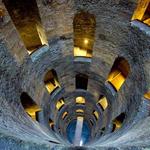
Well of St. Patrick
Beyond the Fortezza (now public gardens), the Pozzo di San Patrizio is a well, 61 meters deep with two separate spiral staircases winding around the shaft. One was built for the descent, and the other for the ascent of the donkeys that brought up water from the well, and the ingenious double-helix design allowed them to move in both directions continuously without collision. You can purchase tickets ahead of time!
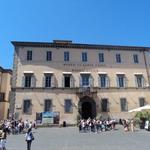
Etruscan Museum "Claudio Faina"
Opposite the cathedral, the Claudio Faina Museum contains one of Italy's most important collections of prehistoric and ancient finds, especially Etruscan figured pottery, bronzes, and jewelry. The more than 3,000 Roman coins are worthy of a museum of their own, and the collections of Attic black and red pottery and Etruscan pottery are equally outstanding.
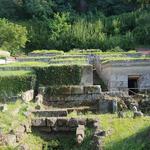
Necropoli Etrusca di Crocifisso del Tufo
Near the Pozzo di San Patrizio are the remains of the Tempio Etrusco, and below the north side of town is an interesting Etruscan necropolis known as Tombe Etrusche del Crocifisso del Tufo. Most of the tombs date from the fifth and sixth centuries BC.
